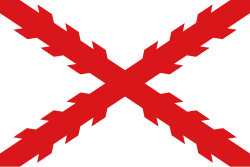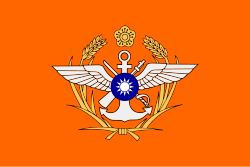This article needs additional citations for verification .(August 2016) |
Taiwan has been controlled by various governments and has been associated with various flags throughout its history. Since 1945, the Republic of China (ROC) rules the island and which became the major territorial base of the ROC since 1949, thus the flag most commonly associated with it which has been the Flag of the Republic of China.
Contents
- Current flag
- Historical flags
- Royal flags
- Political divisions
- Provinces
- Special municipalities
- Provincial cities
- Counties
- Military flags
- Other state flags
- Political party flags
- Chinese Taipei sports flags
- Other historical flags
- Ethnic groups flags
- Indigenous
- See also
- References
The first national flag of Taiwan was first used in 1663 during the Kingdom of Tungning, which had a plain white flag with the character 「鄭」 (zhèng) on the red bordered circle. The flag of the Qing dynasty was also used from 1862 until 1895, when the Republic of Formosa was declared. The Formosan flag had a tiger on a plain blue field with azure clouds below it.
During Japanese rule of Taiwan, the flag of Japan was flown in the island from 1895 to 1945.
Following the transfer of the control of Taiwan from Japan to China in 1945, the national flag was specified in Article Six of the 1947 Constitution of the Republic of China. After the Chinese Civil War in 1949, the government of Chiang Kai-shek relocated the Republic of China (ROC) to the island of Taiwan.






















































































